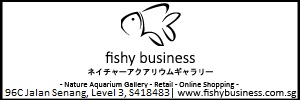NH3 is more toxic when the pH is higher while temperature doesn't/shouldn't have much effect on NH3.
Bacteria converts the NH3 into less toxic NO3 via nitrification (use alot of O2 in the process and destroys some alkalinity thus lowering the pH) while plants use it as a nutrient via photosynthesis (release O2 as a by product).
Where is this thread heading? I think the thread starter just need to add anti-chloramine during the water changes and he should be fine.
Regards
Peter Gwee
Plant Physiology by Taiz and Zeiger










 Reply With Quote
Reply With Quote




Bookmarks